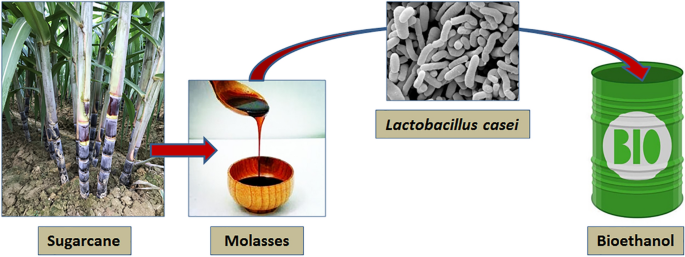The Health Value and Positive Effects of Sugarcane Product
The Journey of Sugarcane: From Harvest to Everyday Products
The journey of sugarcane is a multifaceted process that begins with meticulous farming and finishes in a range of products that permeate our day-to-days live. From the minute the walking canes are gathered at their height sucrose levels, they undergo a collection of detailed actions, consisting of cleaning, squashing, and explanation. These procedures not only yield sugar yet likewise open an array of spin-offs, such as ethanol and naturally degradable packaging products. As we check out the various elements of sugarcane's journey, its duty in sustainability and the more comprehensive ramifications for our environment come right into sharper focus. What lies past the wonderful surface?
Cultivation of Sugarcane
The growing of sugarcane is an important agricultural procedure that needs specific ecological problems and administration techniques. Ideal development happens in tropical and subtropical regions where temperature levels range between 20 ° C and 32 ° C. Adequate rains or irrigation is essential, as sugarcane grows in moist dirt with well-drained problems (sugarcane product). Soil high quality significantly influences return; therefore, farmers often perform soil examinations to determine nutrient demands
This technique assists in effective gathering and optimizes sunshine direct exposure. Plant rotation and intercropping are advised techniques to boost dirt fertility and lower parasite problems.
Fertilizing is an additional critical aspect, with phosphorus, potassium, and nitrogen being the main nutrients required for optimal development. Prompt application of these plant foods can significantly enhance sugar yields. Additionally, keeping track of for diseases and pests throughout the expanding season is important, as these factors can detrimentally influence crop health and performance. On the whole, successful sugarcane farming depends upon a combination of ecological stewardship, calculated planning, and recurring administration practices.
Collecting Methods
Effective sugarcane growing culminates in the collecting phase, which is pivotal for making the most of return and guaranteeing top quality. The timing of the harvest is important; sugarcane is generally gathered when sucrose degrees top, generally between 10 to 18 months after growing. This duration varies based upon climate, dirt type, and sugarcane range.
Collecting techniques can be extensively classified into handbook and mechanical methods. Hand-operated harvesting is labor-intensive, counting on knowledgeable workers who utilize machetes to reduce the stalks close to the ground. This technique permits for careful harvesting, where only the ripest walking canes are selected, thus enhancing total sugar web content.
On the other hand, mechanical harvesting has actually gotten popularity as a result of its efficiency and cost-effectiveness. Specialized harvesters outfitted with cutting knives and conveyor systems can process big locations promptly, significantly decreasing labor costs. This approach may lead to the inclusion of immature canes and a potential decrease in sugar quality.

Despite the method used, making certain that collected walking canes are moved swiftly to refining facilities is vital. Trigger dealing with reduces spoilage and maintains the honesty of the sugarcane, setting the stage for optimum processing.
Processing Methods
Handling sugarcane includes a number of crucial actions that change the gathered stalks into functional products, primarily sugar and molasses. The first stage is washing the walking cane to eliminate soil and particles, complied with by the extraction of juice with crushing or milling. This process usually employs hefty rollers that break the cane fibers to launch the sweet fluid included within.
Once the juice is removed, it undergoes information, where impurities such as dirt particles and bagasse are gotten rid of. This is typically achieved by including lime and heating the juice, enabling sedimentation. The clarified juice is then focused through evaporation, where water web content is decreased, causing a thick syrup.

Inevitably, the processing of sugarcane not just produces sugar and molasses yet also lays the groundwork for numerous derivatives, which will be checked out in succeeding discussions.
Products Derived From Sugarcane
Sugarcane is a flexible plant that produces a vast array of products past simply sugar and molasses. Among the main byproducts are ethanol and biofuels, which have actually gained prominence as renewable resource resources. Ethanol, produced through the fermentation of sugarcane juice, works as a different to fossil gas and is usually blended with gasoline to produce cleaner-burning gas, lowering greenhouse gas exhausts.
Additionally, sugarcane is a significant source of bagasse, the fibrous residue remaining after juice removal. Bagasse is utilized in different applications, including the manufacturing of paper, biodegradable packaging, and as a biomass fuel for power generation. Its use not only reduces waste but additionally improves the sustainability of sugarcane processing.
Moreover, sugarcane-derived products include the food industry, where it works as an all-natural flavor agent and sugar in various cooking applications. In the realm of cosmetics, sugarcane extracts are integrated right into skincare items due to their natural exfoliating residential or commercial properties.
Ecological Impact and Sustainability
The growing and handling of sugarcane have significant implications for environmental sustainability. This plant calls for significant water sources, frequently bring about deficiency of regional water materials and impacting surrounding ecosystems. In addition, the usage of fertilizers and chemicals in sugarcane farming can lead to dirt destruction and waterway air pollution, presenting risks to biodiversity.

Lasting sugarcane farming also advertises dirt health with plant turning and decreased husbandry, boosting carbon sequestration. The adoption of these methods not just supports ecological integrity yet also boosts the resilience of farming communities against environment change.
Verdict
In recap, the trip of sugarcane encompasses various phases from growing to processing, inevitably causing a broad selection of items. The importance of sugarcane prolongs past plain sweeteners, adding to renewable resource with ethanol production, sustainable product packaging via bagasse, and natural extracts for cosmetics. This complex plant plays a crucial duty in both nutritional enrichment and ecological sustainability, highlighting its importance in contemporary farming and commercial practices.
Effective sugarcane farming culminates in the collecting phase, which is pivotal for making the most of return and guaranteeing top quality. The timing of the harvest is essential; sugarcane is usually collected when sucrose levels optimal, usually between 10 to 18 months after planting.Processing sugarcane involves several vital actions that transform the harvested stalks into functional products, mostly sugar and molasses.Sugarcane is a functional plant that produces a broad array of items past just sugar and molasses. Additionally, the usage of plant foods and pesticides in sugarcane farming dig this can result in soil destruction and river pollution, posing threats to biodiversity.